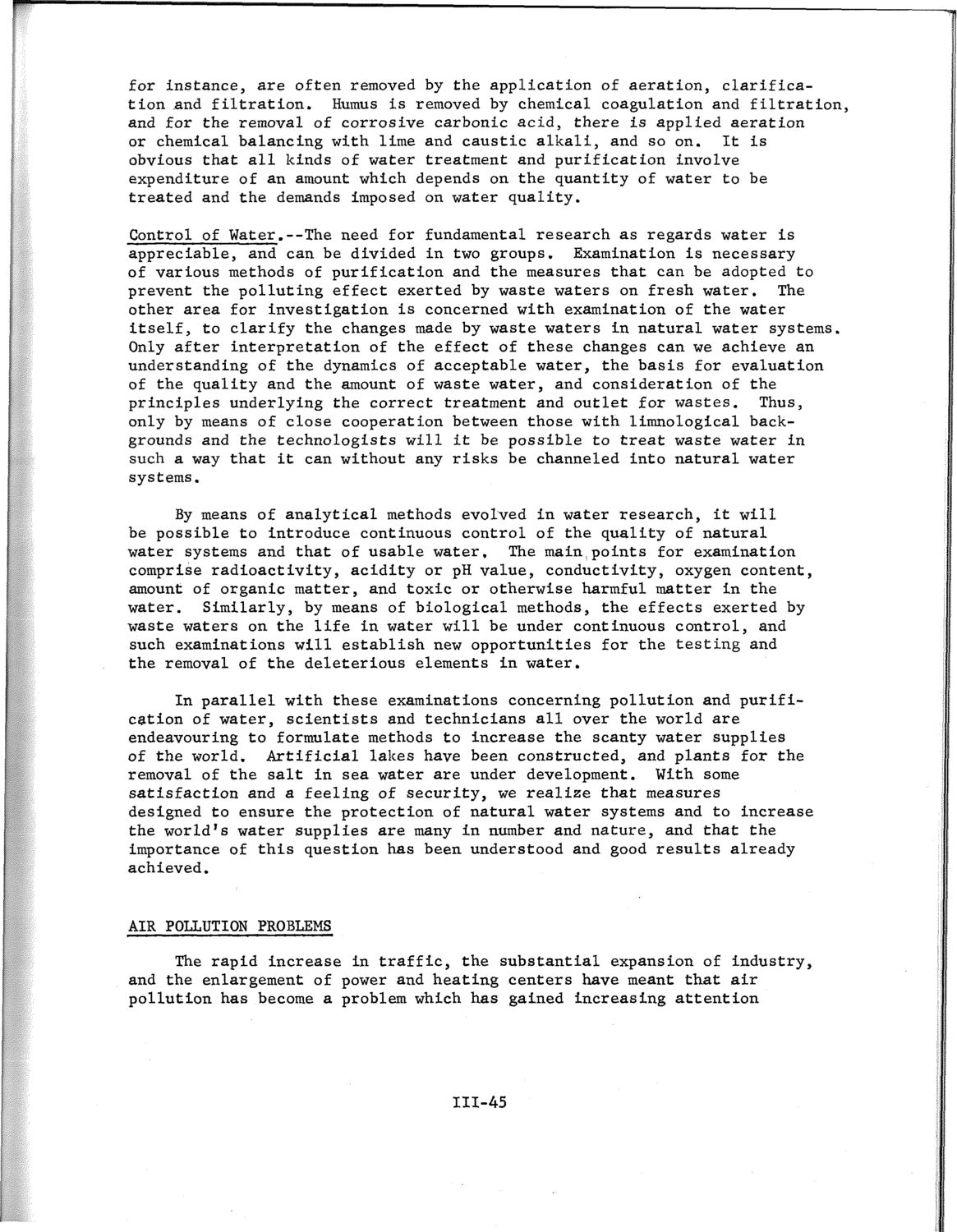| |
| |
Caption: SWE - Proceedings of the First International Conference of Women Engineers and Scientists
This is a reduced-resolution page image for fast online browsing.

EXTRACTED TEXT FROM PAGE:
for instance, are often removed by the application of aeration, clarification and filtration. Humus is removed by chemical coagulation and filtration, and for the removal of corrosive carbonic acid, there is applied aeration or chemical balancing with lime and caustic alkali, and so on. It is obvious that all kinds of water treatment and purification involve expenditure of an amount which depends on the quantity of water to be treated and the demands imposed on water quality. Control of Water.--The need for fundamental research as regards water is appreciable, and can be divided in two groups. Examination is necessary of various methods of purification and the measures that can be adopted to prevent the polluting effect exerted by waste waters on fresh water. The other area for investigation is concerned with examination of the water itself, to clarify the changes made by waste waters in natural water systems. Only after interpretation of the effect of these changes can we achieve an understanding of the dynamics of acceptable water, the basis for evaluation of the quality and the amount of waste water, and consideration of the principles underlying the correct treatment and outlet for wastes. Thus, only by means of close cooperation between those with limnological backgrounds and the technologists will it be possible to treat waste water in such a way that it can without any risks be channeled into natural water systems. By means of analytical methods evolved in water research, it will be possible to introduce continuous control of the quality of natural water systems and that of usable water. The main points for examination comprise radioactivity, acidity or pH value, conductivity, oxygen content, amount of organic matter, and toxic or otherwise harmful matter in the water. Similarly, by means of biological methods, the effects exerted by waste waters on the life in water will be under continuous control, and such examinations will establish new opportunities for the testing and the removal of the deleterious elements in water. In parallel with these examinations concerning pollution and purification of water, scientists and technicians all over the world are endeavouring to formulate methods to increase the scanty water supplies of the world. Artificial lakes have been constructed, and plants for the removal of the salt in sea water are under development. With some satisfaction and a feeling of security, we realize that measures designed to ensure the protection of natural water systems and to increase the world's water supplies are many in number and nature, and that the importance of this question has been understood and good results already achieved. AIR POLLUTION PROBLEMS The rapid increase in traffic, the substantial expansion of industry, and the enlargement of power and heating centers have meant that air pollution has become a problem which has gained increasing attention 111-45
| |